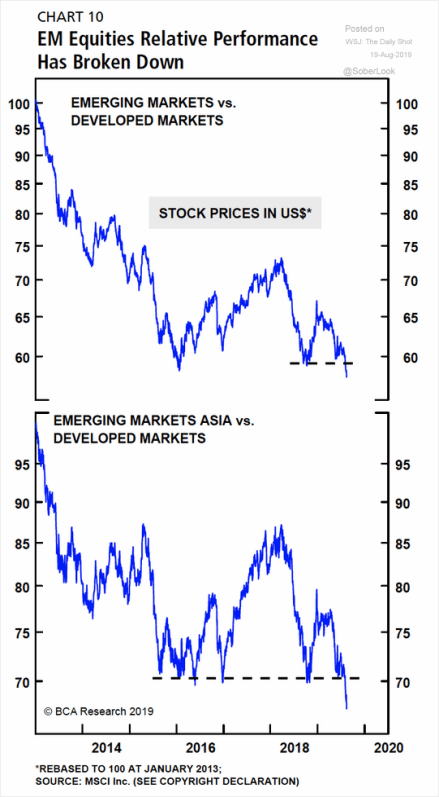Kuroto Fund, L.P. - Q2 2019 Letter
Dear Partners and Friends,
As investors pile into the ‘safest’ and most liquid assets they can find, the last thing they want to own are less liquid emerging and frontier markets equities. After all, when developed markets catch a cold, emerging markets get pneumonia. This tip-of-tongue logic has driven government bonds and large tech stocks up and emerging markets stocks down. Even within emerging markets, investors are showing a strong preference for size and liquidity. Smaller emerging market stocks have noticeably underperformed emerging market equities indices this year. It seems, investors still willing to put their money into emerging markets want to make sure they can change their mind.
The preceding logic does not just capture the mindset of investors based in the developed world, but that of developing world investors as well. Wealthy Latin Americans, Africans, Asians and Middle Easterners have crowded into American government bonds and American stocks along with their first world peers. The gravitational force of the decade-old bull market in developed world financial assets has attracted capital from the far corners of the earth.
The notion that emerging markets could decouple from developed markets and fare better in a downturn is no longer contemplated anywhere. That economic stress leads to dollar strength, commodity weakness and emerging market pain is an accepted truism. Accordingly, emerging markets with conservative monetary policy, low debt loads and stable politics won’t be rewarded for their good behavior in a downturn, but will merely be punished less. More importantly, emerging market financial assets will significantly underperform developed market assets in a stress environment.
In our opinion, such thorough pessimism about emerging market equities reflects a serious failure of imagination when it comes to the future. Accordingly, we offer five reasons to be actually bullish on the emerging markets in which we are invested.
Debt Matters
While the world has lever up to record levels, debt accumulation remains very uneven across countries. The total debt to GDP of the average G7 country is 274%, while the average total debt to GDP of our top seven countries is just 110%. The corporations and governments within the G7 are more than twice as leveraged as the corporations and governments in our top seven markets, while the average G7 consumer is four times more leveraged.[1]
Economic Growth Matters
Our top seven countries are on pace to grow at 4.1% in 2019, while the G7 economies are forecasted to grow just 1.2% this year.[2] The higher rate of growth in our countries is a result of favorable demographics, manageable debt levels, and attractive investment opportunities. These superior attributes deserve a valuation premium, not a discount, in our opinion.[3]
Orthodox Monetary Policy Matters
While the developed world is still trapped in endless cycles of quantitative easing, the emerging world, by and large, never started down this path.[4] As a result, the aggregate balance sheet of the average G7 central banks increased 3.5x as a percentage of GDP from 2008 to 2016, whereas the central bank balance sheets of our top seven countries remained nearly flat as a percentage of GDP over the same time period.[5]
Valuation Matters
Our portfolio trades at 8.0x next year’s estimated earnings, while the S&P trades on a forward PE of 17.5x. Given the superior growth rate of our emerging markets, this valuation disparity should narrow.
Inflation Returns
While an uncontrolled uptick in inflation would clearly be negative for developed world equities, the effect of higher inflation on emerging market equities would be more mixed. Not only is much of the emerging world commodity rich, but the financial architecture of the emerging world remains far more amenable to higher rates of inflation.
Sincerely,
Sean Fieler
END NOTES
[1] Source: IMF, Bloomberg. Debt numbers include household, non-financial corporate, and government debt for each country except Ghana, which includes only government debt due to lack of available information on household and corporate debt. Debt numbers exclude financial corporate debt as well as debt issued by state-owned enterprises. The G7 debt number is the average of the debt numbers for each of the seven countries that constitute the G7, while the debt number for our top seven countries follows the same method.
[2] Source: IMF.
[3] Source: Lazard Research Insights.
[4] Source: Yardeni.
[5] Source: FRED data. The average G7 country’s central bank balance sheet increased from 3.9% to 17.6% as a percent of GDP from 2008 to 2016, while the balance sheets of our countries’ central banks increased from 5.8% in 2008 to 6.4% in 2016.










